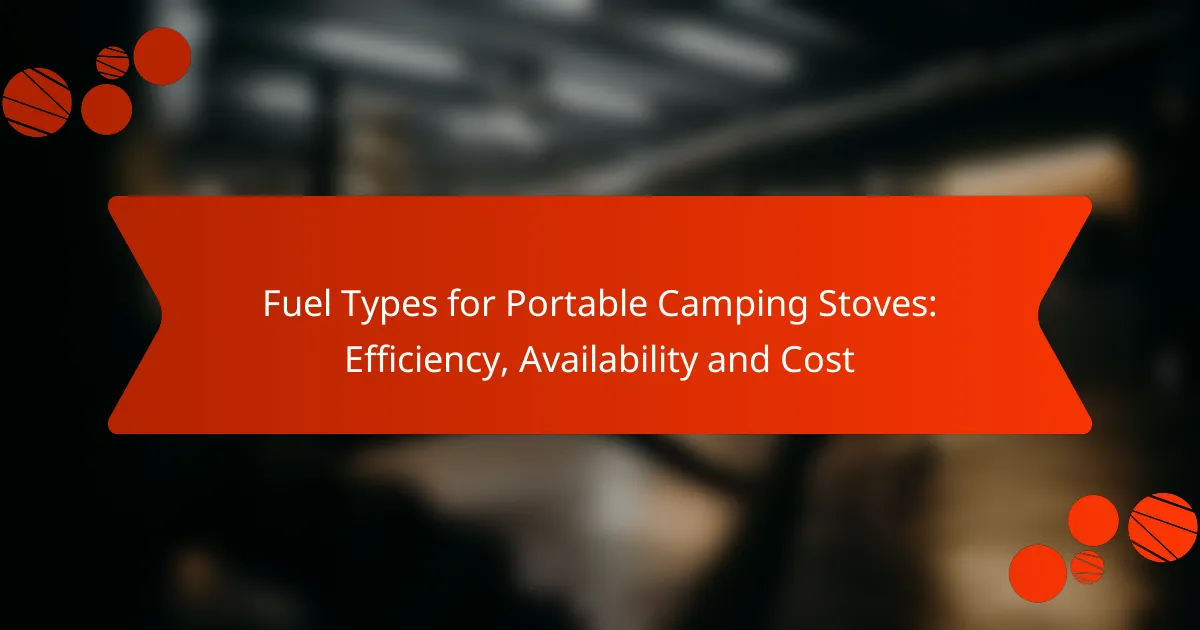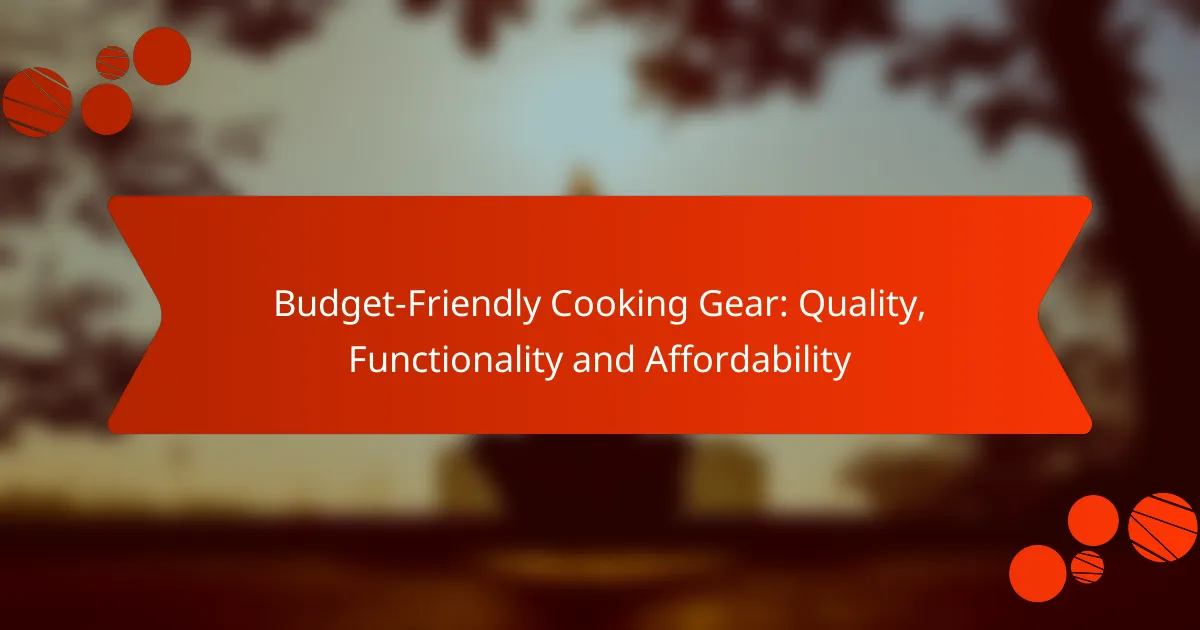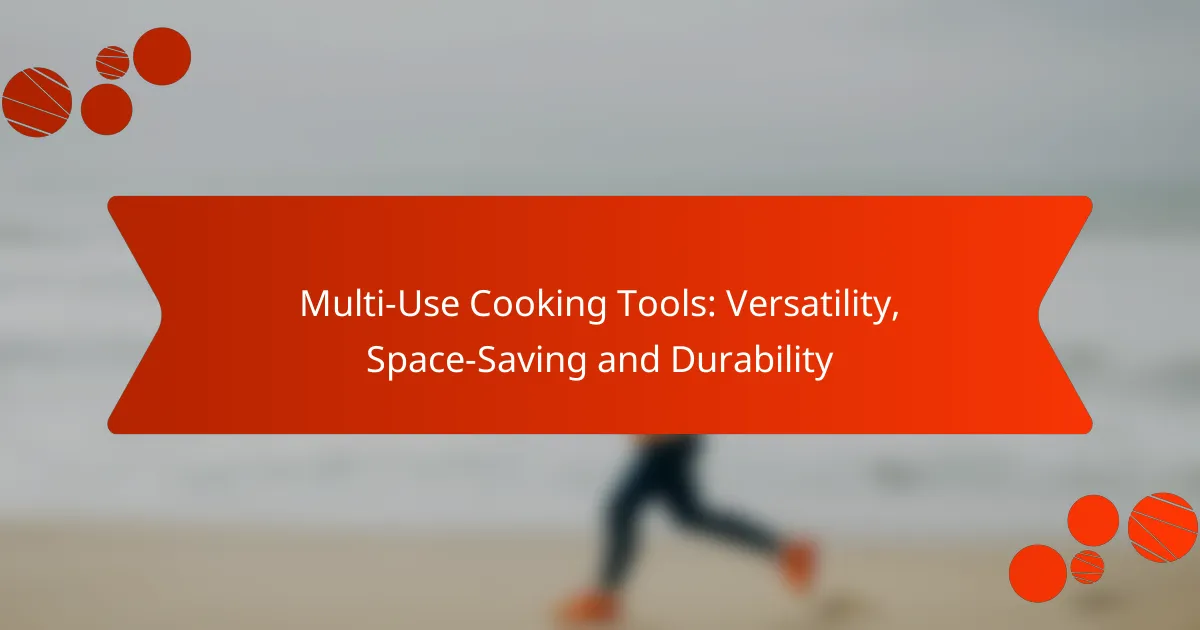When choosing a fuel type for portable camping stoves, it’s essential to consider factors such as efficiency, availability, and cost. Options like propane, butane, alcohol, and wood each offer distinct advantages and limitations that can impact your outdoor cooking experience. Understanding these variables will help you select the best fuel to meet your camping needs.
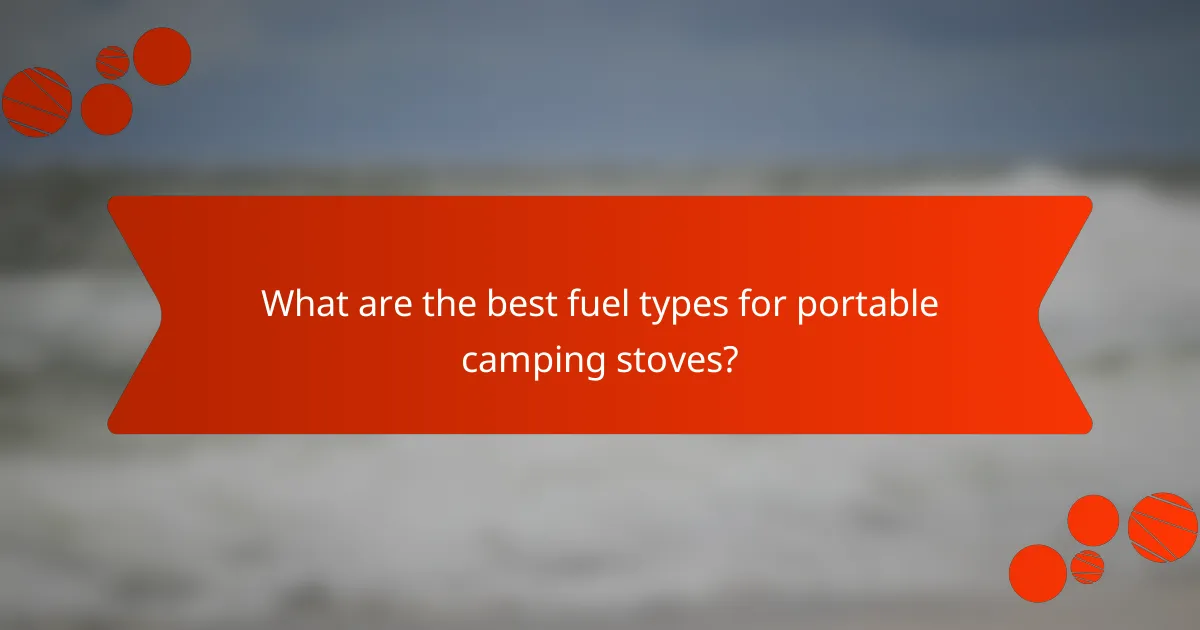
What are the best fuel types for portable camping stoves?
The best fuel types for portable camping stoves include propane, butane, alcohol, wood, and multi-fuel options. Each type has its own efficiency, availability, cost, and sustainability factors that can influence your choice based on your camping needs.
Propane fuel efficiency
Propane is known for its high energy output, making it one of the most efficient fuel types for portable camping stoves. It burns cleanly and produces a consistent flame, which is ideal for cooking meals quickly.
When using propane, you can expect to boil water in just a few minutes, depending on the stove’s design and conditions. This efficiency makes it a popular choice for campers who prioritize speed and performance.
Butane availability
Butane is widely available in canisters at outdoor retailers and is often used in compact camping stoves. However, its availability can vary by region, especially in colder climates where it may not perform well.
Before your trip, check local stores or online retailers for butane canisters. It’s advisable to stock up on fuel in advance, as some areas may have limited supplies, particularly in winter months.
Alcohol fuel cost
Alcohol fuels, such as denatured alcohol or ethanol, are generally inexpensive and easy to find. They are often sold in hardware stores and are a cost-effective option for campers on a budget.
While alcohol burns slower than propane or butane, its low cost makes it an attractive choice for longer trips where fuel efficiency is less critical. Just be aware that you may need to carry more fuel for extended cooking times.
Wood fuel sustainability
Wood is a sustainable fuel option, especially for campers who prefer to minimize their environmental impact. It is renewable and can often be sourced locally, reducing the need for packaged fuel.
When using wood, ensure you follow local regulations regarding fire safety and wood collection. Always use dead and downed wood to avoid damaging live trees, and consider using a portable fire pit to contain flames safely.
Multi-fuel stove versatility
Multi-fuel stoves offer the versatility to use different fuel types, such as propane, butane, kerosene, or alcohol. This flexibility allows campers to adapt to various situations and fuel availability.
When choosing a multi-fuel stove, consider the weight and complexity of the system. While they provide options, they may require more maintenance and setup time compared to single-fuel stoves. Always check compatibility with the fuels you plan to use to ensure optimal performance.

How do fuel types compare in terms of efficiency?
Fuel types for portable camping stoves vary significantly in efficiency, affecting cooking speed and fuel consumption. Propane, butane, and alcohol each have unique characteristics that influence their heat output, burn time, and overall effectiveness in outdoor cooking scenarios.
Propane heat output
Propane is known for its high heat output, making it a popular choice for camping stoves. It typically delivers around 12,000 to 20,000 BTUs per gallon, allowing for quick cooking and boiling times. This efficiency is particularly beneficial in colder climates, where propane performs better than butane.
When using propane, consider the temperature and altitude, as these factors can affect performance. In low temperatures, propane remains effective, while butane may struggle. Always ensure your propane canister is rated for outdoor use to comply with safety regulations.
Butane burn time
Butane generally offers a longer burn time compared to propane, making it suitable for extended cooking sessions. A standard butane canister can provide approximately 1 to 2 hours of continuous burn time, depending on the stove’s output settings. This makes it ideal for simmering or slow cooking.
However, butane’s efficiency decreases in colder temperatures, which can limit its usability in winter camping. For optimal performance, store butane canisters in a warm place before use, and consider using a stove designed specifically for butane fuel.
Alcohol combustion efficiency
Alcohol fuels, such as ethanol or methanol, are less efficient than propane and butane but have their advantages. They typically produce around 7,000 to 9,000 BTUs per gallon, which is lower than the other two options. However, alcohol is often more readily available and can be a safer choice for beginners.
When using alcohol, be aware that it may take longer to boil water and cook food. It’s best suited for lightweight cooking and minimalistic setups. Ensure you use a stove designed for alcohol to maximize combustion efficiency and safety.
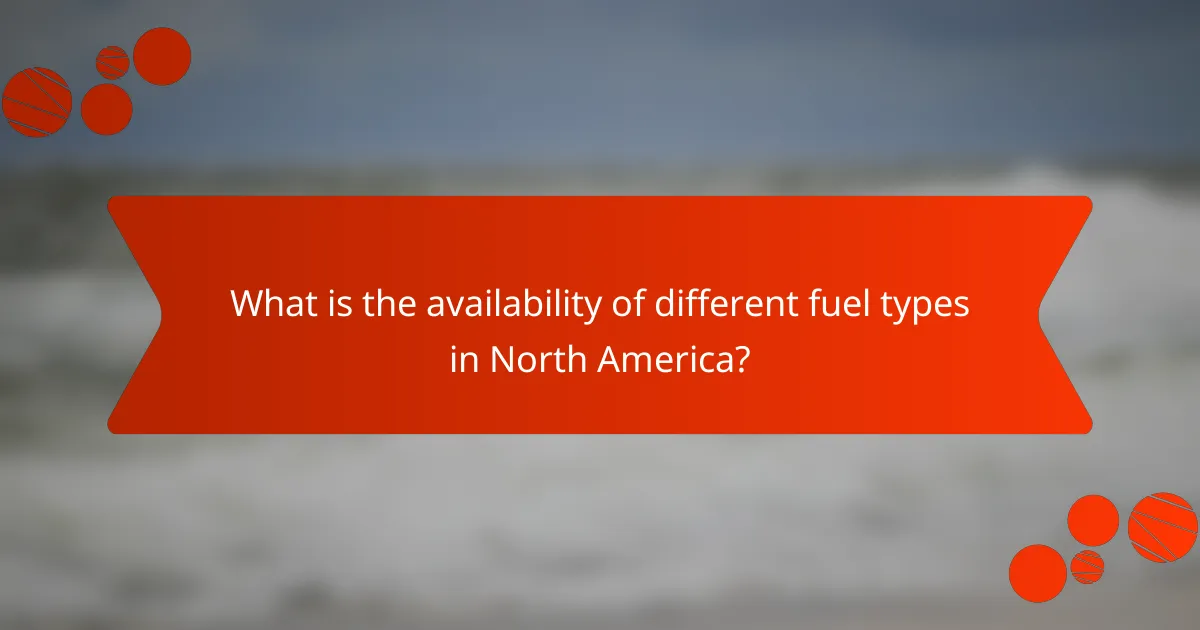
What is the availability of different fuel types in North America?
In North America, the availability of fuel types for portable camping stoves varies significantly. Propane and butane are commonly found in outdoor and hardware stores, while alcohol fuels may require more specialized retailers.
Propane accessibility in stores
Propane is widely accessible in North America, available at most outdoor supply stores, hardware stores, and even gas stations. It is sold in refillable tanks or disposable canisters, making it convenient for campers.
When purchasing propane, check for compatibility with your stove model and ensure you have the necessary adapters if required. Prices typically range from $3 to $5 per pound, depending on location and tank size.
Butane canister distribution
Butane canisters are also readily available, often found alongside propane in outdoor and camping stores. They are usually sold in smaller, portable canisters, making them easy to carry.
However, availability can vary by region, with some areas having limited stock. Prices for butane canisters generally range from $2 to $4 each, so it’s wise to buy a few extra when you find them.
Alcohol fuel sourcing
Alcohol fuels, such as denatured alcohol or ethanol, are less commonly found in standard retail outlets. They are typically available at specialty outdoor stores or online retailers, which may limit immediate access.
When sourcing alcohol fuel, consider checking local hardware stores or camping supply shops. Prices can vary widely, often ranging from $10 to $20 per liter, depending on the brand and purity level.
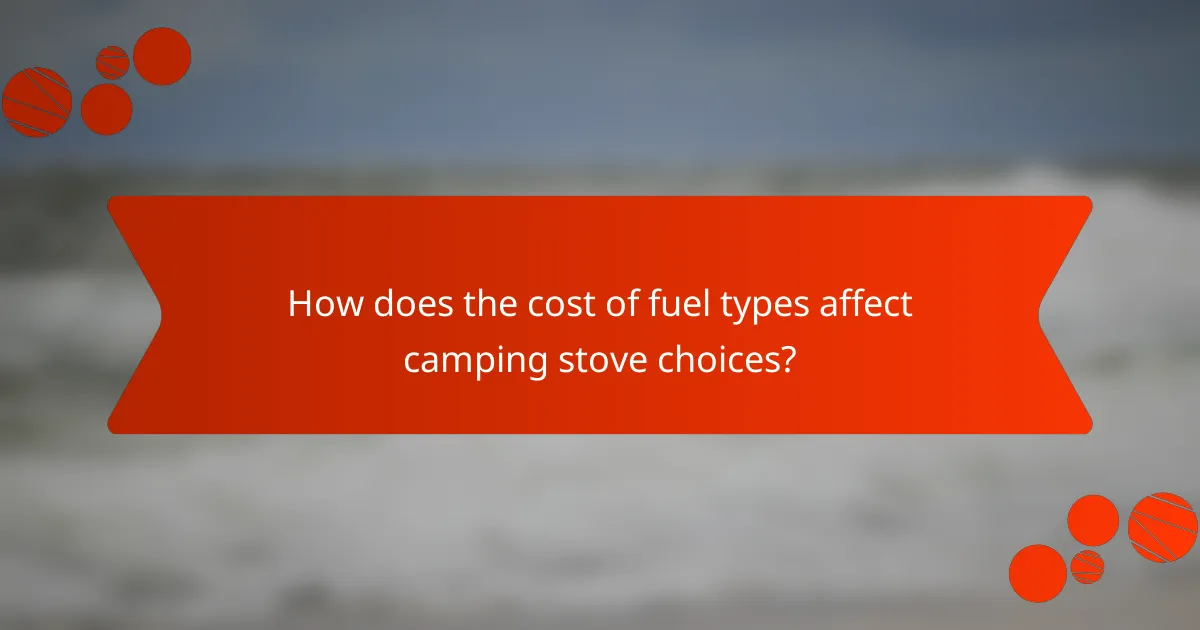
How does the cost of fuel types affect camping stove choices?
The cost of fuel types significantly influences camping stove choices, as it impacts both the overall budget and the convenience of use. Campers often weigh the price per ounce against the efficiency and availability of each fuel type to determine the best option for their needs.
Propane cost per ounce
Propane is a popular choice for camping stoves due to its efficiency and availability. The cost of propane typically ranges from $0.50 to $1.00 per ounce, depending on the region and market fluctuations. When selecting propane, consider purchasing in bulk or using refillable canisters to reduce overall expenses.
Keep in mind that while propane burns hotter and faster, it may require a compatible stove and proper storage to ensure safety and efficiency during your camping trip.
Butane price comparison
Butane is often slightly more expensive than propane, with prices averaging between $0.70 and $1.20 per ounce. This fuel type is favored for its compact canisters, making it ideal for lightweight backpacking. However, butane may not perform as well in colder temperatures compared to propane.
When considering butane, check for availability in your area, as it may not be as widely stocked in some outdoor retailers. Additionally, using a stove designed specifically for butane can enhance performance and safety.
Alcohol fuel affordability
Alcohol fuels, such as ethanol or methanol, are generally more affordable, with costs ranging from $0.30 to $0.80 per ounce. These fuels are often found in camping supply stores and can be a good choice for budget-conscious campers. Alcohol stoves tend to be lighter and simpler, making them attractive for minimalist camping.
However, while alcohol fuels can be cheaper, they may require longer cooking times and produce less heat compared to propane or butane. It’s essential to weigh these factors against your cooking needs and preferences when selecting a fuel type.
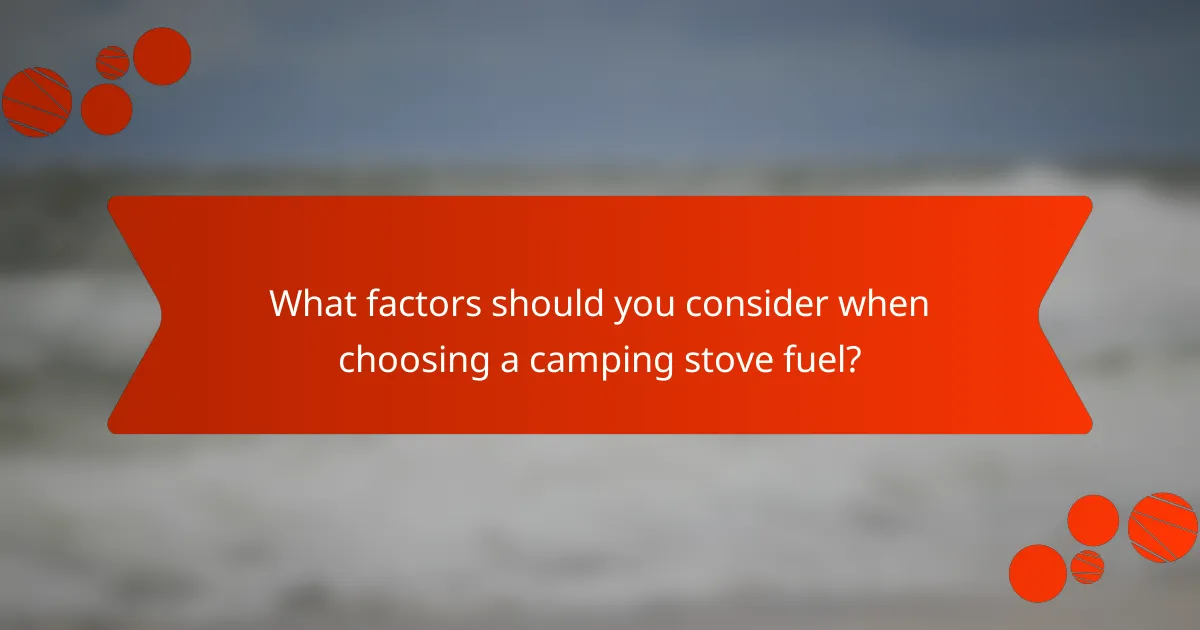
What factors should you consider when choosing a camping stove fuel?
When selecting fuel for a camping stove, consider weight, environmental impact, and your cooking needs. Each factor influences not only the efficiency and convenience of your stove but also your overall camping experience.
Weight and portability
Weight and portability are crucial when choosing camping stove fuel, especially for backpacking trips. Liquid fuels like gasoline or kerosene can be heavier and bulkier compared to canister fuels, which are often lighter and more compact.
For example, a small canister of propane or butane typically weighs around 200-450 grams, making it easy to pack. In contrast, a gallon of liquid fuel can weigh over 3 kilograms, which may not be ideal for long hikes.
Environmental impact
The environmental impact of your fuel choice can vary significantly. Canister fuels generally produce fewer emissions than liquid fuels, making them a more eco-friendly option for those concerned about their carbon footprint.
Additionally, consider the source of the fuel. Renewable options, such as biofuels, are becoming more available and can offer a lower environmental impact compared to traditional fossil fuels.
Cooking needs and preferences
Your cooking needs and preferences will heavily influence your fuel choice. If you plan to cook complex meals requiring high heat, liquid fuels may provide more consistent performance compared to canister fuels.
Conversely, if you prioritize convenience and quick setup, canister fuels are often easier to use and ignite. Assess your cooking style and the types of meals you want to prepare to select the most suitable fuel type for your camping adventures.
